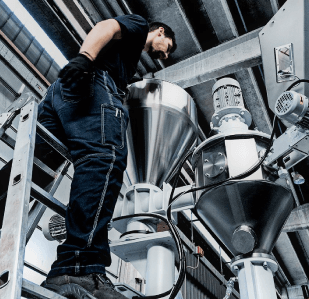Brief summary
This article delves into the intricate effects of UV degradation, commonly known as chalking, on PVC materials. It investigates the progressive deterioration of PVC properties under UV exposure, outlining key phenomena such as discoloration, reduction in mechanical strength, and visible surface changes. By exploring the mechanisms behind chalking and its implications, we sheds light on the challenges posed by UV weathering in PVC applications.
Effects of UV degradation, or chalking:
1. Dehydrochlorination and reduction of PVC molecular weight accompanied by yellow-brown discoloration.
2. Steady decrease in tensile strength, modulus of elasticity, impact resistance and reduction in elongation at break. Amount of chain scission during photo oxidation is more than chain cross-linking. Therefore, the loss in mechanical properties is more due to the weathering effect.
3. Visible effects like bleaching, darkening, cracking, gloss reduction, tackiness, opacifying, chalking, shrinking, crazing within a few weeks of exposure for non-UV-stabilized PVC products.
4. On weathering, white compounds will turn yellow and then bleach, while colored compounds will fade.
What is chalking?
It is believed that UV degradation starts at the surface and then penetrates in the bulk. As the outer layer of PVC degrades, an increasing number of particles of pigment like TiO2 and other inorganic ingredients like CaCO3 are released, producing a white, powdery deposit. The pipe starts looking whitish. This phenomenon is known as chalking.
This white powder is washed away due to rain or water sprays like in cooling towers, exposing the next layer to deterioration, losing its strength. Although a small amount of chalk can be tolerated and may even be desirable in a white PVC product, it has a negative effect on gloss.
Rutile grade is more suitable as it has a more compact structure and less chalking. Chalking is totally unacceptable in dark-colored material.
Visible spectrum:
- In addition to damage by UV radiation between 290–400 nm, visible light between 400–500 nm also has an effect.
- Visible light of this wavelength also has energy that damages weaker structures, such as:
1. Double bonds
2. Conjugated double bonds
3. Branched structure
- On weathering, white compounds will turn yellow and then bleach, while colored compounds will fade.
Anomalous yellowing of TiO2 in chalking:
All rutile TiO2-stabilized PVC products tend to become yellow with increasing TiO2 concentration. With more initial yellowness due to more TiO2, it is not unexpected that due to chalking, there is a greater effect of perceived whiteness.
If, instead of dYI, we plot YI against TiO2 concentration, we can see that there is actually a slight decrease in yellowness at higher TiO2 loadings.
TiO2 also exhibits maximum gloss retention at about 10 phr. Gloss retention is more sensitive to small differences in weathering than chalking or color change. If gloss retention is less critical, then TiO2 grade is less critical.
Initial and long-term discoloration due to chalking:
First discolorations are observed after 200 hours of exposure. On further exposure, the mechanical erosion of the more photo-oxidized layers regenerates the surface.
If the erosion is efficient enough, the profile may never get into this discoloration phase. Mechanical properties of lead-stabilized compounds are better than tin mercaptide-based compounds. It is evident that the loss of mechanical properties is not only related to total photo oxidation but also to the rate at which the photo oxidation occurs.
Change in opacity following chalking:
TiO2 in the PVC matrix has a Refractive Index of 1.83, while TiO2 in air has a Refractive Index of 2.71. As the surface oxidizes, a higher percentage of rutile TiO2 is now exposed to air rather than fully embedded in the PVC matrix. TiO2 particle now has an air interface and the relative R.I. shifts from 1.83 for rutile/PVC system to 2.71 for rutile/air system.
This results in significantly higher scattering efficiency resulting in an increase in TiO2’s effective opacity and higher brightness in the exposed part.
Credits: Yashodhan Kanade



_5f116712726a4.jpeg)

.jpeg)
.jpeg)